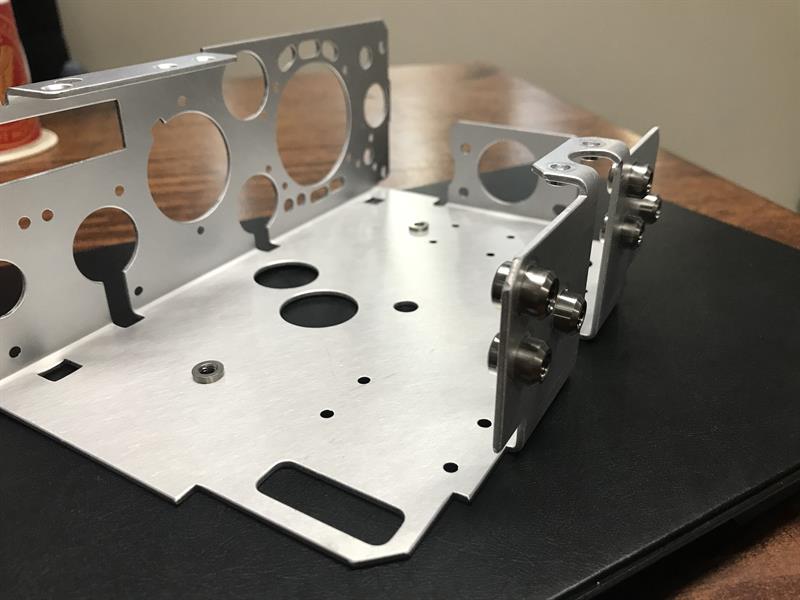In parallel with that, HV Wooding was asked to prototype three laser-cut components for a ventilator for the Ventilator Challenge UK Consortium. The company’s sales director, Paul Allen, says that while its core business is in the energy sector – making parts for renewable energy, power generation, conversion and distribution, and electrical switchgear –it has also manufactured components for the medical sector for 30 years.
Wooding’s customer, Williams Advanced Engineering, was working on prototyping the ventilator and required three aluminium components for the chassis and front plate of the Smiths Medical ParaPAC 300 ventilator. “We created and produced five off over the weekend,” says Allen. “They were very well received and we then moved to the next stage, which was to get the parts to conform 100 per cent to requirements and into full production.”
Aero engine maker Rolls-Royce was managing the supply chain for the additional ParaPAC 300 ventilators, which had the aim of ramping up production from hundreds to thousands a month, with these assembled at a dedicated duplicate production line at Smiths’ Luton plant. Several companies were working on the production of vital components as Smiths expanded its supply chain capability through the consortium, to ensure a speedy response to the crisis.

The ventilator parts
HV Wooding programs its laser profiling machines using Hexagon Manufacturing Intelligence’s Radan software. “Radan meant we could quickly condense all the necessary up-front work, which would normally take at least a month, into just a few days, and we successfully manufactured and delivered 2,000 sets of each of the three components in a very short time frame.”
The parts had to be laser-cut, formed, then treated with inserts put in and sent on to the assembly line at Luton. Allen Radan played a major role in meeting the challenge. “We run Trumpf fibre laser technology and use Radan for assisting with our quotation process, as well as producing the parts from the DXF facilitating the programming, nesting and cutting. It meant we could put multiple parts into the program, and it nested everything in the most cost effective and efficient way.”
HV Wooding have been able to keep its factory open and operational throughout lockdown, but Paul Allen says a number of measures were put in place to ensure the health and safety of their workforce, including rigorous social distancing and daily temperature testing. “A lot of effort’s gone into making sure our shopfloor workers have the correct equipment and space, while a number of the office staff are working from home.”










